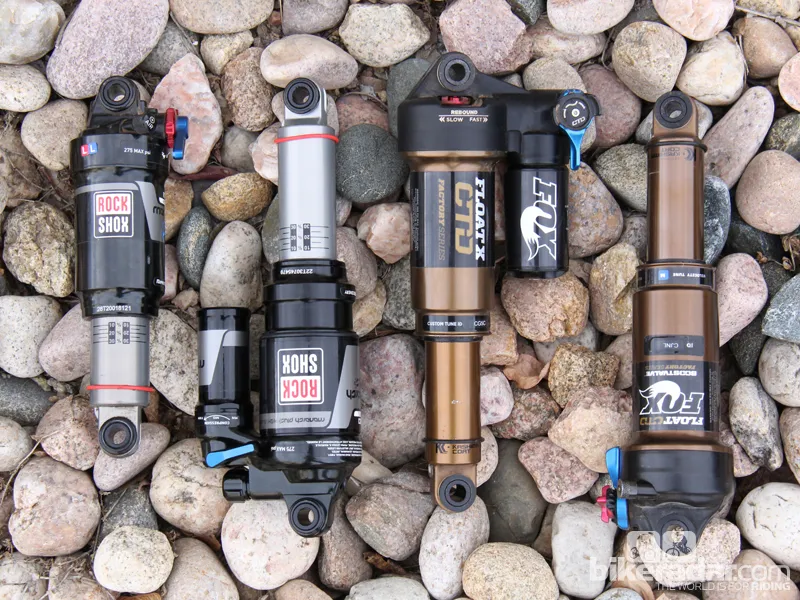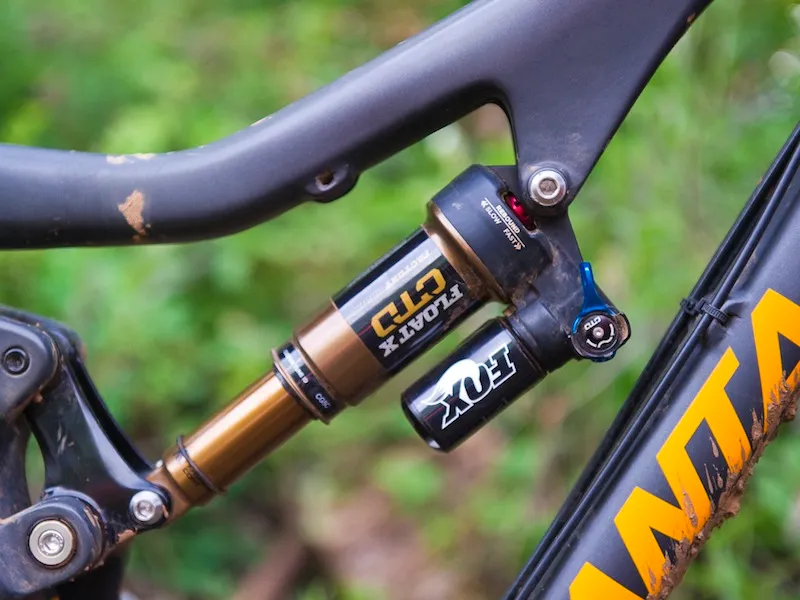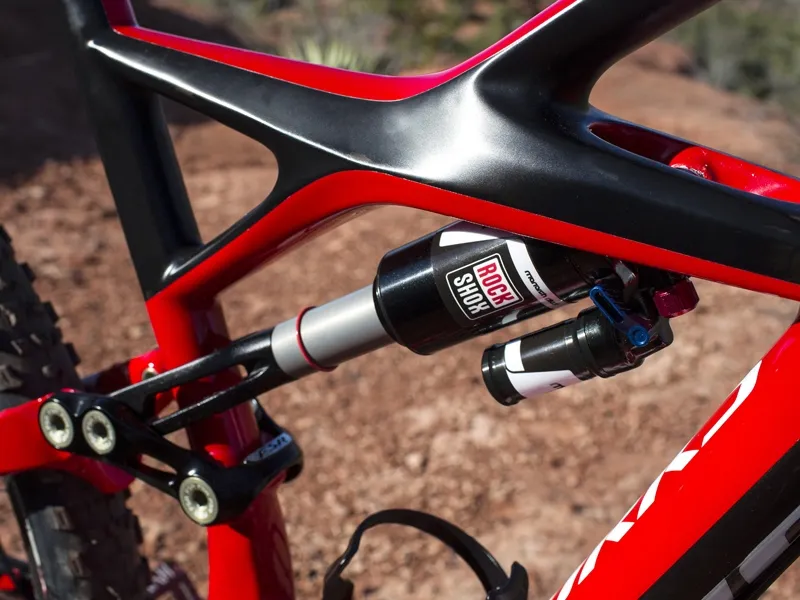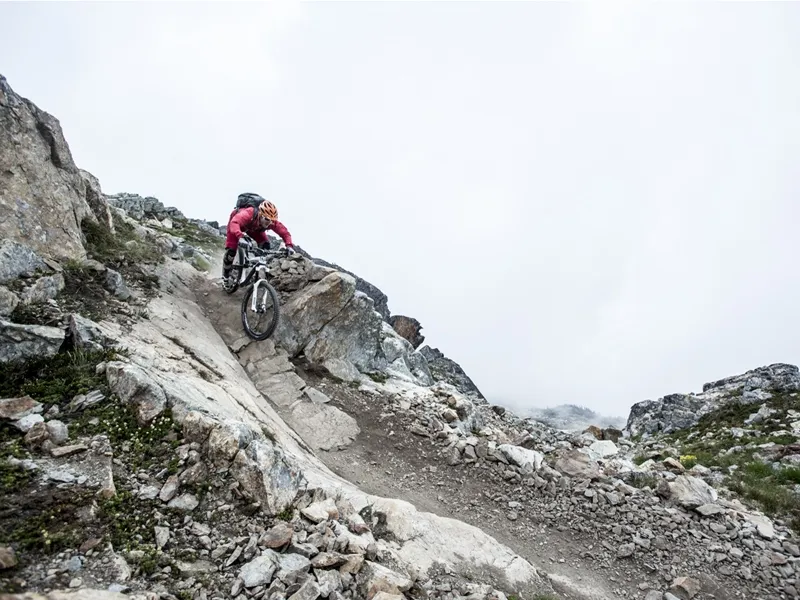Call them what you will: trail bikes, all-mountain bikes or the increasingly-popular term 'enduro' bikes, the 140-160mm travel segment of the mountain bike market is going through a renaissance of sorts. Frames and components are getting lighter and stronger (though certainly not cheaper). They are also becoming much more capable. Some of the more progressive bikes in this category sport geometry that is inline with downhill race bikes from a few years ago.
Part of the evolution of these jack-of-all-trades machines includes the development of lightweight air shocks with piggyback reservoirs – the Fox Racing Shox Float X and the RockShox Monarch Plus being two popular models.
Is a piggyback air shock a worthy upgrade?
The rise of enduro racing has made these shocks more popular, although many companies opt not to spec them in order to keep prices in check. Most bikes in the 140-160mm travel range are compatible with piggyback shocks, though there are a handful of models with quirky frame designs that lack the additional space required for this reservoir.

Whether or not this is a worthy upgrade will depend on where and how you ride
Performance gains, weight penalties
According to Mark Jordan, Global Marketing Communications Manager for Fox Racing Shox, the reservoir design of the Float X offers two significant performance benefits over a standard Float CTD shock. The Float X has more oil volume than the standard Float CTD and distributes the damping loads between two valve circuits. “This adds up to better damping control and more consistent damping during extreme use,” said Jordan.
“It also allows for a wide adjustment range, easy tuning and a modular design than can adapt a remote,” he added.
RockShox Monarch Plus offers similar benefits. “The Monarch Plus damper has two compression circuits (one on the shaft and one in front of the internal floating piston). By being able to split the compression loads across two pistons itallows us to greatly refine the feel. This results in a reduction in harshness that can sometimes be felt at higher shaft speeds. With more oil volume than a Monarch RT3, the Monarch Plus is less prone to heat buildup which can result in a reduction in damping force (the shock speeds up). The last thing that differs is the IFP volume. The Monarch Plus has more IFP volume than the Monarch RT3, which in certain shock sizes (especially 200x57) reduces the amount of ramp the shock creates towards bottom out,” said RockShox product manager Jeremiah Boobar.
In the case of our Santa Cruz Bronson C long-term test bike (which comes with a Fox CTD shock) we found that the Float X rear shock, as well as the Monarch Plus, allowed the bike to live up to its full potential as an aggressive trail bike.

The change from a standard Fox Float CTD rear shock—which is a very capable shock for cross-country and general trail riding – was apparent midway down our first extended downhill. The rear suspension tracked better, providing a bit more traction over rough terrain. The shock also stayed cooler, thanks to the higher oil volume afforded by the additional reservoir, which resulted in more consistent, fade-free performance. (If you’ve ever barreled down a long descent and felt your suspension soften or feel like the damping circuits aren’t quite doing their job, you’ve likely experienced suspension fade.)

We've experienced similar performance gains with the very capable RockShox Monarch Plus
The downside? There’s a gain of around 100-120g when swapping a Fox Float CTD or a Monarch RT3 for a Float X or a Monarch Plus. Not to mention there's also a hit to your wallet to the tune of several hundred dollars…
Who are you and where do you ride?
If you ride in an area with long, technical descents and think braking is for the weak, then this slight weight penalty will likely be more than made up for by superior performance. If, on the other hand, your terrain lacks long descents or you're not one to push the pace then you may be better served by keeping your existing shock on your bike and your money in your pocket.

If you ride your trail bike like a downhill rig then you should consider swapping your rear shock for the latest generation of piggyback air shocks
“The Firm compression setting on a Monarch Plus may not be firm enough when compared to a Monarch RT3 for riders that are hyper-focused on pedaling efficiency. If you ride a bike with less than 130mm of travel on smooth trails the improvement in bump performance that you get from a Monarch plus may not be very noticeable,” said Boobar.
Boobar suggests that riders consider upgrading to a piggyback-style shock if they: do shuttle runs or use chairlifts more than three times a year; don’t bother to switch the shock to Pedal or Lock; or if racing to the top of the hill isn’t at all your thing. If this sounds like you, then you will likley appreciate the better bump performance afforded by this style of shock.
“Think about the overall ride characteristics that you want and the demands that you put on your suspension. When considering changing from an inline shock to a reservoir design, the main thing to think about is what you need from your suspension. If you are leaning toward the aggressive side of trail riding—racing enduro, riding very rugged trails and extended downhills—then switching to a Float X will cater to your riding style,” adds Jordan.
